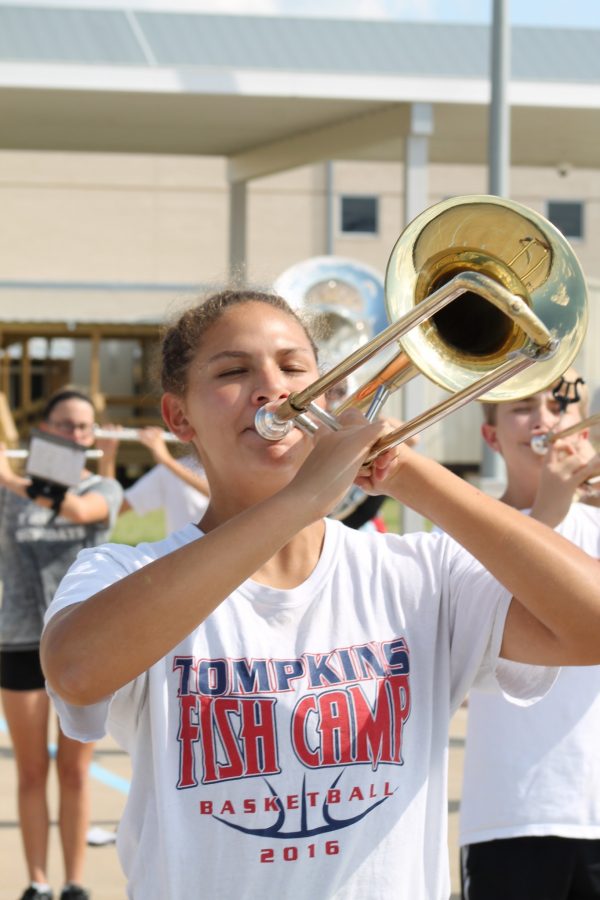As marching band season comes to its conclusion for the year, the seniors say farewell to their marching careers in high school and the younger members are left with years of improvement and aspiration to come. The directional brass instruments specific for marching band such as the marching euphoniums and the sousaphones are shipped away to a repair shop after a long season. Now the tubas and concert euphoniums are assigned to the corresponding students. Woodwind plastic based instruments that are designed to be used in outdoor rehearsals are now swapped for the metal indoor versions. The unified Tompkins High School Band goes from one ensemble to its hierarchy of bands ranked based on skill. There is not as much focus now on the projection forward to an audience, because there is no movement other than foot tapping. Students can now sit in the chairs their feet have been longing. The objective of the band is to fill the room they are in with more lyrical and musical waves while still maintaining the drive to have the characteristic sound of the band.
“I would say that the transition is focused on approaching the instrument with the same fundamentals and adjusting to the new environment,” said assistant band director Joseph Cherwink.
There is a definite change in how events and rehearsals run in the band program after marching season is over. Since the directors promote rehearsing how the music will be performed, the students are seated in chairs for class time instead of standing. The music is intended to fill a room with sound instead of driving it all towards one specific location. These factors and some other things to consider such as the lowered intensity of progression are put into perspective and tested to see if students can maintain the same quality of sound and professional approach with all the changes going on.
“We rehearse slightly different as there is less physical activity and we break the band up into sectionals. We tend to branch out into different things as well, such as Full Orchestra, Jazz Band, the Musicals, Solo and Ensemble, and the concert bands themselves,” said Cherwink.
The band is taken and put into separate performing ensembles, all based on musicality and skills a musician has. These ensembles are ordered based on the spring auditions taking place the prior year . They are the set of ensembles determined for the first semester. Before the end of the first semester, an audition is done based on the completion of the band program’s famous Happy Fun Time Scale Project, where a student is prompted to pass off their twelve major scales with the band directors. There is also the defining portion of the audition where each student must play two cuts from their region etudes. The final results from this audition determine how the bands are going to be arranged from the start of the second semester to the end of the year. The process is done somewhat similarly, for the jazz band, musicals and full orchestra.
“Personally, I prefer concert season because it allows me to express my musicality more on the french horn as opposed to the mellophone in marching band. In marching band, having to divvy up the time between the two can be challenging, so for me it’s better to focus on one thing rather than both,” said senior Andres Colmenares, french horn player in the Symphonic Band.
There are different opinions from students and directors about which season they prefer. One of the reasons why many may enjoy concert season is due to the relaxation in the schedule. A plethora of hours are spent to prepare the eight minute show for marching season. During concert season there are rehearsals going on, but not nearly as often as having eight hours a week. Some people may also prefer it because they favor the concert music that is selected and the individual time that is provided for the improvement of one in their instrument.







